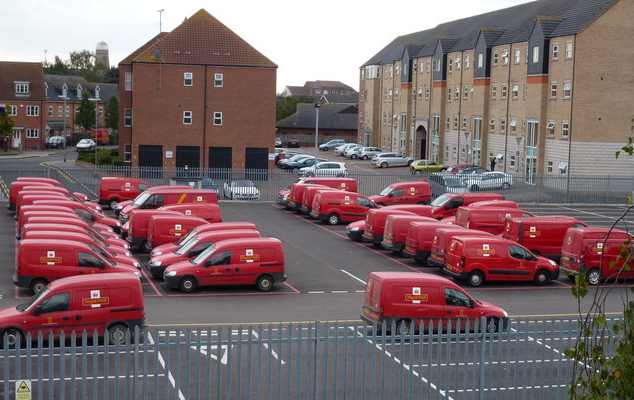Royal Mail introduced its own electric postal vans
The major UK postal service company launched a pilot initiative to test how electric vans will perform while moving mail between large depots.

The major UK postal service company launched a pilot initiative to test how electric vans will perform while moving mail between large depots.
The initiative commenced this week, and the testing will last one year.
Royal Mail will use nine electric vans in total, each one capable of travelling for 100 miles before recharge.
More specifically, three 3.5-tonne vehicles and six of 6 and 7.5 tonne electric postal vans will distribute mail across the South East and will be based at the Royal Mail’s Mount Pleasant depot in central London.
The electric vans were designed, assembled and manufactured by Oxfordshire-based carmaker Arrival in Midlands.
Paul Gatti, Managing Director of Royal Mail Fleet said: “Royal Mail is delighted to be collaborating with Arrival and pioneering the adoption of large electric commercial vehicles”.
“We have trialled electric trucks before but not of this type of design and look forward to see what additional benefits they can bring to our existing fleet of around 49,000 vehicles”, he added.
Denis Sverdlov, Chief Executive of Arrival said: “Cities like London will benefit hugely from a switch to electric, in terms of both pollution and noise”.
The innovative vans are made of “ultra-lightweight composite materials” which reduce weight.
They are also designed out of modular components so that a single person can build the truck in four hours, and swap out any component in fifteen minutes.
According to Arrival, the main innovation of the electric vans is that after running 100 miles on pure battery power, there is a type of dual power mode that "tops up" the batteries- a technology that has not been revealed.
A lot of experts have focused on the actual design of the trucks, underlying how nicely it can fit and interact with the other vehicles in the roads.
According to Wired, Heavy Goods Vehicles (HGV) are disproportionately responsible for pedestrian and cyclist deaths in London- twenty percent of pedestrian fatalities and over seventy percent of cyclist fatalities, despite HGVs only making up 4 percent of road miles in London.
But the new electric vans “ have a large front window that wraps around the driver's position and allows them to have a wider field of view than in other vehicles”, Wire said.
It added: “The trucks also meet Transport for London's Direct Vision Standard, which says drivers or large vehicles should be able to see pedestrians and cyclists without using mirrors or cameras”.
Another remarkable fact is that Arrival priced the electric vans almost the same as diesel trucks, removing one of the main barriers of the deployment of electric vehicles- the price difference.
Royal Mail has already tested and ordered another 100 vans from Peugeot, which are expected to be out in service in December.
Ananth Srinivasan, a Mobility Expert in US-based consultancy Frost & Sullivan, said that such initiatives are being deployed more and more worldwide.
“European postal providers, starting with DHL in Germany, have been taking this approach for a while now", adding that especially UK, Germany, France, Italy and Spain have the potential to convert significant proportions of their fleets to electric vehicles in the coming years.
Srinivasan added: "Our research indicates that by 2025 these countries may have 100,000 postal service vehicles going electric between them".




_400_250_s_c1.png)

_400_250_80_s_c1.jpg)